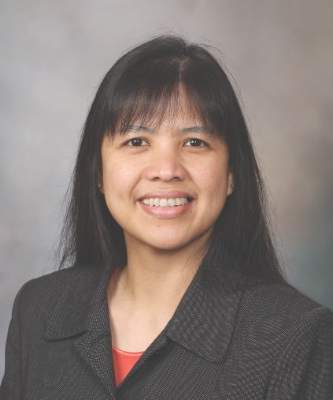User login
Imagine a world where psychiatrists focus on mental health as much as they focus on mental illness. That is the challenge made by Dr. Dilip V. Jeste, former president of the American Psychiatric Association, current distinguished professor of psychiatry and neurosciences at the University of California, La Jolla, and the leading proponent of positive psychiatry. With psychologist Barton W. Palmer, Ph.D., professor in the department of psychiatry at the university, Dr. Jeste writes and edits Positive Psychiatry (Washington: American Psychiatric Publishing, 2015) for practitioners to understand what positive psychiatry is and how it can be used to promote mental health in our patients. The pair assembled a group of experts on this topic to write chapters on all aspects of positive psychiatry.
As a psychiatrist, I appreciated their explanation of positive psychology, the precursor and motivation for putting forth a model for positive psychiatry. Positive psychiatry focuses on helping our patients with illness maximize their well-being, as opposed to positive psychology, which targets healthy individuals. Positive psychiatry fits very well into today’s holistic treatment of the patient, and urges that we focus on areas such as resilience, coping, optimism, wisdom, personal mastery, and spirituality. These areas are sources of strength for our patients that we frequently overlook.
As a geriatric psychiatrist, I also appreciated the chapter on how to apply positive psychiatry principles to geriatric patients to improve their quality of life. It cannot be understated how important social support, spirituality, resilience, optimism, and leisure activities are when treating the individual geriatric patient. There are similar chapters describing the application of positive psychiatry to other populations, such as children and minorities, and how to apply the approach to everyday clinical practice.
The book is organized into four parts. The first explains positive psychosocial factors including positive psychosocial traits, resilience, and positive social psychiatry. The second part describes positive outcomes, including the concepts of recovery and well-being, and includes a chapter about instruments for assessing positive mental health. The third part is very practical, covering psychotherapeutic, behavioral, complementary, alternative, and integrative medicine, and preventive interventions. The fourth part covers diverse topics such as the biology and bioethics of positive psychiatry, and deals with child and adolescent, geriatric, and cultural positive psychiatry.
It is difficult to mention all the concepts of positive psychiatry in a short review. Suffice it to say, Dr. Jeste, Dr. Palmer, and their authors have done an excellent job of explaining positive psychiatry and its relevance to improving the lives of our psychiatric patients. It is a book well worth adding to one’s library.
Dr. Lapid is an associate professor of psychiatry at the Mayo Clinic College of Medicine, Rochester, Minn., and has American Board of Psychiatry and Neurology certifications in psychiatry, geriatric psychiatry, psychosomatic medicine, and hospice and palliative medicine.
Imagine a world where psychiatrists focus on mental health as much as they focus on mental illness. That is the challenge made by Dr. Dilip V. Jeste, former president of the American Psychiatric Association, current distinguished professor of psychiatry and neurosciences at the University of California, La Jolla, and the leading proponent of positive psychiatry. With psychologist Barton W. Palmer, Ph.D., professor in the department of psychiatry at the university, Dr. Jeste writes and edits Positive Psychiatry (Washington: American Psychiatric Publishing, 2015) for practitioners to understand what positive psychiatry is and how it can be used to promote mental health in our patients. The pair assembled a group of experts on this topic to write chapters on all aspects of positive psychiatry.
As a psychiatrist, I appreciated their explanation of positive psychology, the precursor and motivation for putting forth a model for positive psychiatry. Positive psychiatry focuses on helping our patients with illness maximize their well-being, as opposed to positive psychology, which targets healthy individuals. Positive psychiatry fits very well into today’s holistic treatment of the patient, and urges that we focus on areas such as resilience, coping, optimism, wisdom, personal mastery, and spirituality. These areas are sources of strength for our patients that we frequently overlook.
As a geriatric psychiatrist, I also appreciated the chapter on how to apply positive psychiatry principles to geriatric patients to improve their quality of life. It cannot be understated how important social support, spirituality, resilience, optimism, and leisure activities are when treating the individual geriatric patient. There are similar chapters describing the application of positive psychiatry to other populations, such as children and minorities, and how to apply the approach to everyday clinical practice.
The book is organized into four parts. The first explains positive psychosocial factors including positive psychosocial traits, resilience, and positive social psychiatry. The second part describes positive outcomes, including the concepts of recovery and well-being, and includes a chapter about instruments for assessing positive mental health. The third part is very practical, covering psychotherapeutic, behavioral, complementary, alternative, and integrative medicine, and preventive interventions. The fourth part covers diverse topics such as the biology and bioethics of positive psychiatry, and deals with child and adolescent, geriatric, and cultural positive psychiatry.
It is difficult to mention all the concepts of positive psychiatry in a short review. Suffice it to say, Dr. Jeste, Dr. Palmer, and their authors have done an excellent job of explaining positive psychiatry and its relevance to improving the lives of our psychiatric patients. It is a book well worth adding to one’s library.
Dr. Lapid is an associate professor of psychiatry at the Mayo Clinic College of Medicine, Rochester, Minn., and has American Board of Psychiatry and Neurology certifications in psychiatry, geriatric psychiatry, psychosomatic medicine, and hospice and palliative medicine.
Imagine a world where psychiatrists focus on mental health as much as they focus on mental illness. That is the challenge made by Dr. Dilip V. Jeste, former president of the American Psychiatric Association, current distinguished professor of psychiatry and neurosciences at the University of California, La Jolla, and the leading proponent of positive psychiatry. With psychologist Barton W. Palmer, Ph.D., professor in the department of psychiatry at the university, Dr. Jeste writes and edits Positive Psychiatry (Washington: American Psychiatric Publishing, 2015) for practitioners to understand what positive psychiatry is and how it can be used to promote mental health in our patients. The pair assembled a group of experts on this topic to write chapters on all aspects of positive psychiatry.
As a psychiatrist, I appreciated their explanation of positive psychology, the precursor and motivation for putting forth a model for positive psychiatry. Positive psychiatry focuses on helping our patients with illness maximize their well-being, as opposed to positive psychology, which targets healthy individuals. Positive psychiatry fits very well into today’s holistic treatment of the patient, and urges that we focus on areas such as resilience, coping, optimism, wisdom, personal mastery, and spirituality. These areas are sources of strength for our patients that we frequently overlook.
As a geriatric psychiatrist, I also appreciated the chapter on how to apply positive psychiatry principles to geriatric patients to improve their quality of life. It cannot be understated how important social support, spirituality, resilience, optimism, and leisure activities are when treating the individual geriatric patient. There are similar chapters describing the application of positive psychiatry to other populations, such as children and minorities, and how to apply the approach to everyday clinical practice.
The book is organized into four parts. The first explains positive psychosocial factors including positive psychosocial traits, resilience, and positive social psychiatry. The second part describes positive outcomes, including the concepts of recovery and well-being, and includes a chapter about instruments for assessing positive mental health. The third part is very practical, covering psychotherapeutic, behavioral, complementary, alternative, and integrative medicine, and preventive interventions. The fourth part covers diverse topics such as the biology and bioethics of positive psychiatry, and deals with child and adolescent, geriatric, and cultural positive psychiatry.
It is difficult to mention all the concepts of positive psychiatry in a short review. Suffice it to say, Dr. Jeste, Dr. Palmer, and their authors have done an excellent job of explaining positive psychiatry and its relevance to improving the lives of our psychiatric patients. It is a book well worth adding to one’s library.
Dr. Lapid is an associate professor of psychiatry at the Mayo Clinic College of Medicine, Rochester, Minn., and has American Board of Psychiatry and Neurology certifications in psychiatry, geriatric psychiatry, psychosomatic medicine, and hospice and palliative medicine.


